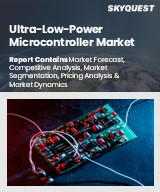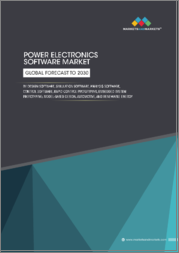
|
시장보고서
상품코드
1479052
임베디드 시스템 시장 : 구성요소별, 기능별, 최종 이용 산업별, 지역별, 기회 및 예측(2017-2031년)Embedded System Market Assessment, By Component, By Function, By End-use Industry, By Region, Opportunities and Forecast, 2017-2031F |
||||||
세계 임베디드 시스템 시장 규모는 2023년 1,212억 달러에서 2031년 1,763억 6,000만 달러에 달할 것으로 예상되며, 예측 기간인 2024년부터 2031년까지 연평균 4.8% 성장할 것으로 예상됩니다. 많은 산업 분야에서 IoT 기기의 보급이 세계 임베디드 시스템 시장 수요 확대의 주요 원동력이 되고 있습니다. 임베디드 시스템은 효율성을 높이고 복잡한 작업을 효율적으로 수행할 수 있기 때문에 임베디드 시스템 및 기술 분야의 지속적인 연구 개발이 세계 시장 확대에 기여하고 있습니다. 점점 더 많은 산업에서 임베디드 시스템 사용을 촉진하여 성능을 향상시키고 있습니다.
또한, 임베디드 시스템의 사용은 일상 생활에서 스마트 기술의 중요한 부분으로 자리 잡고 있습니다. 임베디드 시스템 애플리케이션의 연결성과 통신의 발전은 임베디드 시스템 시장의 세계 확장에 기여하고 있습니다. 통합과 지능형 프로세스로 인해 업무 효율성이 향상되고 기업에게 더 많은 이익을 가져다주는 것은 세계 임베디드 시스템 시장의 성장을 계속 촉진할 것입니다. 컴퓨터, 로봇, AI, 머신러닝 등 소프트웨어 기술과 임베디드 시스템의 통합은 변화하고 있습니다.
기업은 에너지 수확 기술을 임베디드 시스템에 통합하는 새로운 방법을 통해 이익을 얻을 수 있습니다. 태양 에너지 및 운동 에너지와 같은 재생에너지원을 활용하면 기존 에너지원과 무관하게 시스템을 운영할 수 있지만, 자동화 및 임베디드 시스템의 효과는 임베디드 시스템을 개발하고 개선하기 위해 규모 확장, 혁신 및 다양한 구성요소의 통합을 가져올 수 있습니다. 임베디드 시스템을 개발 및 개선할 수 있습니다. 이 개발은 표준 프로세스를 개선할 뿐만 아니라 사용자 기술 분야에서도 새로운 가능성을 제공합니다.
예를 들어, 2023년 9월 GlobalFoundaries와 Microchip Technology는 Microchip의 Silicon Storage Technology 사업부를 통해 GF 28SLPe 공정을 적용한 SST ESF3 3세대 임베디드 슈퍼 플래시 기술을 이용한 NVM 솔루션을 발표했습니다.
임베디드 시스템 시장의 성장을 촉진하는 AI와의 통합
시장은 기술의 급속한 발전과 통합을 반영하고 있으며, AI를 다양한 응용 분야에 통합하여 자동 지능형 시스템을 개발하는 것은 시장에서 필요로하는 세계 시스템의 구현입니다.
예를 들어, 임베디드 시스템은 산업 및 의료와 같은 다양한 부문에서 사람들이 올바른 결정을 내릴 수 있도록 지능형 알고리즘을 완벽하게 지원할 수 있습니다. 또한 지능의 힘과 임베디드 시스템의 연결은 장치와 시스템의 능력을 향상시키고 성능과 혁신을 가속화하며, AI의 도입과 응용과 지능의 상호 작용을 개선하는 기술의 개발은 현대 시스템 진화의 중요한 부분이며 시스템 시장 확대에 기여하고 있습니다. 시스템 시장 확대에 기여하고 있습니다.
클라우드 기술과의 연결성이 세계 임베디드 시스템 시장의 수요를 촉진
전자기기와 클라우드 기술의 통합은 임베디드 시스템 개발에서 중요한 도구입니다. 이 파트너십을 통해 스토리지, 처리 능력, 알고리즘 등 여러 클라우드 리소스를 활용하는 하드웨어를 개발할 수 있습니다. 데이터, 처리 및 스토리지에 대한 접근성이 향상됨에 따라 임베디드 장비는 클라우드에 쉽게 연결할 수 있게 되어 전 세계 임베디드 시스템 시장 점유율 성장에 기여하고 있습니다. 이러한 통합은 빠른 데이터 교환, 실시간 의사결정, 센서와 같은 IoT 장치의 전반적인 성능 향상을 가능하게 합니다. 또한, 클라우드 기술이 제공하는 확장성과 유연성을 통해 임베디드 시스템은 수요와 공급에 대응할 수 있습니다. 통합은 효율성을 높이고, 혁신의 문을 열어 다양한 분야에서 유연하고 유용한 임베디드 시스템을 만들어 시장을 확대할 수 있습니다.
이 보고서는 세계 임베디드 시스템 시장에 대해 조사 분석했으며, 시장 규모와 예측, 시장 역학, 주요 기업 현황과 전망 등을 제공합니다.
목차
제1장 조사 방법
제2장 프로젝트 범위와 정의
제3장 주요 요약
제4장 고객의 소리
- 제품과 시장 정보
- 브랜드 인지 방식
- 구입 결정에서 고려되는 요소
- 프라이버시와 안전 규제 고려
제5장 세계의 임베디드 시스템 시장 전망(2017-2031년)
- 시장 규모와 예측
- 금액
- 컴포넌트별
- 하드웨어
- 소프트웨어
- 서비스
- 기능별
- 실시간
- 독립형
- 모바일
- 네트워크
- 최종 이용 산업별
- 가전제품
- 자동차
- 의료
- 통신
- 산업
- 에너지
- 기타
- 지역별
- 북미
- 유럽
- 아시아태평양
- 남미
- 중동 및 아프리카
- 시장 점유율 : 기업별(2023년)
제6장 세계의 임베디드 시스템 시장 전망 : 지역별(2017-2031년)
- 북미
- 시장 규모와 예측
- 컴포넌트별
- 기능별
- 최종 이용 산업별
- 미국
- 캐나다
- 멕시코
- 유럽
- 독일
- 프랑스
- 이탈리아
- 영국
- 러시아
- 네덜란드
- 스페인
- 터키
- 폴란드
- 아시아태평양
- 인도
- 중국
- 일본
- 호주
- 베트남
- 한국
- 인도네시아
- 필리핀
- 남미
- 브라질
- 아르헨티나
- 중동 및 아프리카
- 사우디아라비아
- 아랍에미리트
- 남아프리카공화국
제7장 시장 매핑(2023년)
- 컴포넌트별
- 기능별
- 최종 이용 산업별
- 지역별
제8장 거시적 환경과 산업 구조
- 밸류체인 분석
- PESTEL 분석
- Porter's Five Forces 분석
제9장 시장 역학
- 성장 촉진요인
- 성장 억제요인(과제, 제한)
제10장 주요 기업 상황
- 시장 리더 상위 5개사 경쟁 매트릭스
- 시장 리더 상위 5개사 시장 매출 분석(2023년)
- 인수합병/합작투자(해당되는 경우)
- SWOT 분석(시장 기업 5개사)
- 특허 분석(해당되는 경우)
제11장 사례 연구
제12장 주요 기업 전망
- Infineon Technologies AG
- Intel Corporation
- Microchip Technology Inc
- NXP Semiconductors NV
- Qualcomm Technologies Inc.
- Renesas Electronics Corp
- Samsung Electronics Co., Ltd.
- STMicroelectronics International N.V.
- Texas Instruments Incorporated
- Toshiba Corporation
제13장 전략적 추천
제14장 당사 소개와 면책사항
ksm 24.05.20Global embedded system market is projected to witness a CAGR of 4.8% during the forecast period 2024-2031, growing from USD 121.2 billion in 2023 to USD 176.36 billion in 2031. The proliferation of Internet of Things (IoT) devices across many industries is the key factor driving the growth of the global embedded system market demand. Embedded systems increase efficiency and allow them to perform complex tasks efficiently, therefore continuous research and development in the field of embedded systems and technology contributes to the growth of global market penetration. There is an increase in the number of industries, promoting the use of embedded systems to improve performance.
Furthermore, the use of embedded systems seems to be an important part of smart technology in daily life. Advances in connectivity and communication in embedded systems application are contributing to the global distribution of embedded systems market. Integration and intelligent processes to increase operations efficiency resulting in more profits to the businesses continue to drive the growth of global embedded systems market. The integration of software technologies such as computers, robots, artificial intelligence, and machine learning with embedded systems is changing.
Companies can benefit from new ways to integrate energy harvesting technology into embedded systems. Although, the system can operate independently of conventional energy sources using natural energy sources such as solar energy or kinetic energy, the effects of automation and embedded systems can bring scale, innovation, and integration of different components to develop and improve embedded systems. Although the development improves standard processes, it offers new possibilities in the field of user technology.
For instance, in September 2023, GlobalFoundaries and Microchip Technology, through Microchip's Silicon Storage Technology division, launched the SST ESF3 third generation embedded Super Flash technology NVM solution in the GF 28SLPe process.
Integration with Artificial Intelligence to Promote the Embedded System Market's Growth
The embedded systems market reflects the rapid development and integration of technology. Developing automatic and intelligent systems by integrating artificial intelligence into various applications is the implementation of a global system needed in the market.
For instance, embedded systems can fully support intelligent algorithms as they help people make the right decisions in various sectors such as industry and medicine. In addition, the connection between the power of intelligence and the embedded system enhances the capabilities of devices and systems, accelerating performance and innovation. The introduction of artificial intelligence and the development of technology to improve the interaction between application and intelligence are significant part of the evolution of modern systems and contribute to the expansion of the systems market.
Connectivity with Cloud Technology to Fuel Global Embedded System Market Demand
Integration of electronic devices and cloud technologies is an important tool in the development of embedded systems. This partnership develops hardware which uses multiple cloud resources, including storage, processing power, and algorithms. As they get better access to data, processing, and storage, embedded devices can easily connect to the cloud contributing to the growth of the global embedded system market share. The integration allows faster data exchange, real-time decision making, and improved overall performance of IoT devices such as sensors. In addition, the scalability and flexibility offered by cloud technologies enable embedded systems to respond to supply and demand. Integration increases efficiency and opens the door to innovation, expanding the market by creating flexible and useful embedded systems in different areas.
For instance, in July 2023, Microchip Technology Incorporated, a leading provider of smart, connected, and secure embedded control solutions, announced a multi-year investment of about USD 300 million to expand its operations in India, which is one of the world's fastest-growing semiconductor industry centers.
Smart Technologies to Drive Global Embedded System Market Growth
The introduction of embedded systems in technologies such as smart homes and smart cities will accelerate the growth of global embedded systems market size. Embedded systems serve as the backbone of these smart organisms and enable the integration of various devices and sensors to optimize processes and increase efficiency. The adoption of embedded systems follows a trend driven by factors such as urbanization and the search for sustainable living, along with the increasing need for smart solutions. Moreover, the embedded system enables the development of new technologies that increase energy efficiency and safety and improve the quality of life. Additionally, the proliferation of IoT devices increases the need for embedded systems to manage and control connected devices. The global embedded systems market trend is expected to grow as smart technology continues to expand into new areas and applications, driven by the need for smart, connected solutions in cities and homes.
For instance, in January 2024, NXP Semiconductor expanded its single-chip automotive radar family with the SAF86xx, which combines a radar transceiver, processor, and MACsec device for secure automotive ethernet communications. The development enables radar to be identified and expands the capabilities of the embedded system with the new generation ADAS architecture.
Government Initiatives Fostering Revenue Growth
Government initiatives play an important role in improving revenue generation in the revenue market through various mechanisms. Investments in subsidies and development subsidies, tax breaks, and subsidy programs encourage companies to innovate and use established technologies. Public-private partnerships accelerate development in critical sectors such as healthcare, transportation, and defense by strengthening partnerships between government agencies and industry.
Moreover, the management is working on developing smart infrastructure, IoT connected industry, and Industry 4.0 strategy to provide a better system connected environment. As a reaction to this development in business operations, governments around the world are recognizing the economic potential of embedded systems, leading to policies that support technological change and innovation. As a result, companies in the established market benefit from greater opportunities, reduced barriers to entry, and an environment that supports growth and competition.
For instance, in May 2023, the United States National Science Foundation (NSF) and India's Ministry of Electronics and Information Technology (MeitY) signed an Implementation Arrangement as a significant move, fostering research collaboration. The framework promotes joint proposals by the United States and Indian researchers in embedded systems, with funding provided by NSF and MeitY respectively.
North America Dominates Embedded System Market
North America dominates the embedded systems market as the region has a strong technology infrastructure and a thriving ecosystem of modern companies specializing in embedded technology. North America is home to many industries where embedded systems are widely used, such as automotive, aerospace, and medical. Furthermore, the region benefits from strong government support in research and development, innovation, and market development. Additionally, North America is beginning to embrace emerging technologies, such as IoT and artificial intelligence, increasing the need for technology. The presence of semiconductor manufacturers and chip designers in the region contributes to regional dominance. Overall, North America's combination of technological excellence, industry leadership, government support, and innovation culture place the country at the forefront of the market.
For instance, in September 2023, Microchip Technology Inc. achieved a milestone in its USD 800 million project to triple production capacity at its Gresham, Oregon site, supporting increased manufacturing in the United States amid rising semiconductor demand.
Future Market Scenario (2024 - 2031F)
According to the global embedded system market analysis, the embedded systems market will be characterized by innovations driven by developments in artificial intelligence, Internet of Things, computing, and 5G connectivity, which will enable progressively more connected devices. The widespread use of IoT devices in the industry will increase the power of embedded systems, facilitate communication and data exchange between devices, and enable the emergence of more efficient and intelligent systems.
In addition, the shift to informatics will occur to process data close to the source, reduce delays, and increase decision-making efficiency, and promote the integration of embedded systems and terminal equipment. Industries will increasingly participate in Industry 4.0 with integrated systems for automation, environmental protection and increased productivity.
Key Players Landscape and Outlook
The embedded system market is dynamic, with key players driving advancements in technology and product innovation. Intense competition among these leaders fosters continuous improvements in storage capacities, performance, and cost-effectiveness. Collaborations, partnerships, and acquisitions will shape competitive dynamics as the embedded system market evolves. The outlook for the embedded system market remains robust with increasing data storage demands and emerging technologies, including the widespread integration of 3D NAND. These key players will continue to play pivotal roles in shaping the industry's trajectory, ensuring sustained growth and innovation in embedded systems for diverse applications.
In February 2024, Infineon Technologies AG and Honda Motor Co., Ltd. signed a Memorandum of Understanding (MoU) to establish a strategic relationship. Honda chose Infineon as a semiconductor partner to help coordinate future products and technology roadmaps. The two firms agreed to continue conversations about supply stability, as well as to foster reciprocal information transfer and collaboration on initiatives targeted at shortening the time to embedded system market for innovations.
In January 2024, Infineon Technologies AG and GlobalFoundries signed a multi-year agreement to supply Infineon's AURIX TC3x 40nm automotive microcontrollers, power management, and connectivity solutions. The partnership aims to support Infineon's business growth from 2024 to 2030, focusing on next-gen vehicle systems.
Table of Contents
1.Research Methodology
2.Project Scope & Definitions
3.Executive Summary
4.Voice of Customer
- 4.1.Product and Market Intelligence
- 4.2.Mode of Brand Awareness
- 4.3.Factors Considered in Purchase Decisions
- 4.3.1. Features and other value-added service
- 4.3.2. IT Infrastructure Compatibility
- 4.3.3. Efficiency of Solutions
- 4.3.4. After-Sales Support
- 4.4.Consideration of Privacy & Safety Regulations
5.Global Embedded System Market Outlook, 2017-2031F
- 5.1.Market Size & Forecast
- 5.1.1.By Value
- 5.2.By Component
- 5.2.1.Hardware
- 5.2.1.1.Microcontrollers
- 5.2.1.2.Microprocessors
- 5.2.1.3.Field-Programmable Gate Arrays (FPGA)
- 5.2.1.4.Digital Signal Processors (DSP)
- 5.2.1.5.Memories
- 5.2.1.6.Application-specific Integrated Circuits
- 5.2.1.7.Others
- 5.2.2.Software
- 5.2.2.1.Operating System
- 5.2.2.2.Middleware
- 5.2.3.Services
- 5.2.1.Hardware
- 5.3.By Function
- 5.3.1.Real-Time
- 5.3.2.Standalone
- 5.3.3.Mobile
- 5.3.4.Network
- 5.4.By End-use Industry
- 5.4.1.Consumer Electronics
- 5.4.2.Automotive
- 5.4.3.Healthcare
- 5.4.4.Telecommunication
- 5.4.5.Industrial
- 5.4.6.Energy
- 5.4.7.Others
- 5.5.By Region
- 5.5.1.North America
- 5.5.2.Europe
- 5.5.3.Asia-Pacific
- 5.5.4.South America
- 5.5.5.Middle East and Africa
- 5.6.By Company Market Share (%), 2023
6.Global Embedded System Market Outlook, By Region, 2017-2031F
- 6.1.North America*
- 6.1.1.Market Size & Forecast
- 6.1.1.1.By Value
- 6.1.2.By Component
- 6.1.2.1.Hardware
- 6.1.2.1.1.Microcontrollers
- 6.1.2.1.2.Microprocessors
- 6.1.2.1.3.Field-Programmable Gate Arrays (FPGA)
- 6.1.2.1.4.Digital Signal Processors (DSP)
- 6.1.2.1.5.Memories
- 6.1.2.1.6.Application-specific Integrated Circuits
- 6.1.2.1.7.Others
- 6.1.2.2.Software
- 6.1.2.2.1.Operating System
- 6.1.2.2.2.Middleware
- 6.1.2.3.Services
- 6.1.2.1.Hardware
- 6.1.3.By Function
- 6.1.3.1.Real-Time
- 6.1.3.2.Standalone
- 6.1.3.3.Mobile
- 6.1.3.4.Network
- 6.1.4.By End-use Industry
- 6.1.4.1.Consumer Electronics
- 6.1.4.2.Automotive
- 6.1.4.3.Healthcare
- 6.1.4.4.Telecommunication
- 6.1.4.5.Industrial
- 6.1.4.6.Energy
- 6.1.4.7.Others
- 6.1.5.United States*
- 6.1.5.1.Market Size & Forecast
- 6.1.5.1.1.By Value
- 6.1.5.2.By Component
- 6.1.5.2.1.Hardware
- 6.1.5.2.1.1.Microcontrollers
- 6.1.5.2.1.2.Microprocessors
- 6.1.5.2.1.3.Field-Programmable Gate Arrays (FPGA)
- 6.1.5.2.1.4.Digital Signal Processors (DSP)
- 6.1.5.2.1.5.Memories
- 6.1.5.2.1.6.Application-specific Integrated Circuits
- 6.1.5.2.1.7.Others
- 6.1.5.2.2.Software
- 6.1.5.2.2.1.Operating System
- 6.1.5.2.2.2.Middleware
- 6.1.5.2.3.Services
- 6.1.5.2.1.Hardware
- 6.1.5.3.By Function
- 6.1.5.3.1.Real-Time
- 6.1.5.3.2.Standalone
- 6.1.5.3.3.Mobile
- 6.1.5.3.4.Network
- 6.1.5.4.By End-use Industry
- 6.1.5.4.1.Consumer Electronics
- 6.1.5.4.2.Automotive
- 6.1.5.4.3.Healthcare
- 6.1.5.4.4.Telecommunication
- 6.1.5.4.5.Industrial
- 6.1.5.4.6.Energy
- 6.1.5.4.7.Others
- 6.1.5.1.Market Size & Forecast
- 6.1.6. Canada
- 6.1.7. Mexico
- 6.1.1.Market Size & Forecast
All segments will be provided for all regions and countries covered
- 6.2.Europe
- 6.2.1. Germany
- 6.2.2. France
- 6.2.3. Italy
- 6.2.4. United Kingdom
- 6.2.5. Russia
- 6.2.6. Netherlands
- 6.2.7. Spain
- 6.2.8. Turkey
- 6.2.9. Poland
- 6.3.Asia-Pacific
- 6.3.1.India
- 6.3.2.China
- 6.3.3.Japan
- 6.3.4.Australia
- 6.3.5.Vietnam
- 6.3.6.South Korea
- 6.3.7.Indonesia
- 6.3.8.Philippines
- 6.4.South America
- 6.4.1.Brazil
- 6.4.2.Argentina
- 6.5.Middle East & Africa
- 6.5.1.Saudi Arabia
- 6.5.2.UAE
- 6.5.3.South Africa
7.Market Mapping, 2023
- 7.1.By Component
- 7.2.By Function
- 7.3.By End-use Industry
- 7.4.By Region
8.Macro Environment and Industry Structure
- 8.1.Value Chain Analysis
- 8.2.PESTEL Analysis
- 8.2.1.Political Factors
- 8.2.2.Economic System
- 8.2.3.Social Implications
- 8.2.4.Technological Advancements
- 8.2.5.Environmental Impacts
- 8.2.6.Legal Compliances and Regulatory Policies (Statutory Bodies Included)
- 8.3.Porter's Five Forces Analysis
- 8.3.1.Supplier Power
- 8.3.2.Buyer Power
- 8.3.3.Substitution Threat
- 8.3.4.Threat from New Entrant
- 8.3.5.Competitive Rivalry
9.Market Dynamics
- 9.1.Growth Drivers
- 9.2.Growth Inhibitors (Challenges and Restraints)
10.Key Players Landscape
- 10.1.Competition Matrix of Top Five Market Leaders
- 10.2.Market Revenue Analysis of Top Five Market Leaders (in %, 2023)
- 10.3.Mergers and Acquisitions/Joint Ventures (If Applicable)
- 10.4.SWOT Analysis (For Five Market Players)
- 10.5.Patent Analysis (If Applicable)
11.Case Studies
12.Key Players Outlook
- 12.1.Infineon Technologies AG
- 12.1.1.Company Details
- 12.1.2.Key Management Personnel
- 12.1.3.Products & Services
- 12.1.4.Financials (As reported)
- 12.1.5.Key Market Focus & Geographical Presence
- 12.1.6.Recent Developments
- 12.2.Intel Corporation
- 12.3.Microchip Technology Inc
- 12.4.NXP Semiconductors NV
- 12.5.Qualcomm Technologies Inc.
- 12.6.Renesas Electronics Corp
- 12.7.Samsung Electronics Co., Ltd.
- 12.8.STMicroelectronics International N.V.
- 12.9.Texas Instruments Incorporated
- 12.10.Toshiba Corporation
Companies mentioned above DO NOT hold any order as per market share and can be changed as per information available during research work.



















